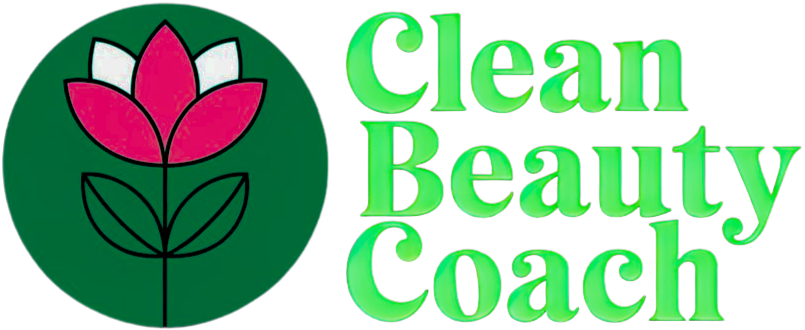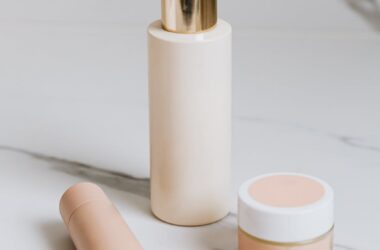In an era where clean beauty products have taken center stage in personal care routines, creating your own vegan hair grease offers a perfect blend of ethical consciousness and hair health benefits.
The beauty industry has undergone a massive transformation in recent years, with consumers demanding transparency about ingredients and manufacturing processes.
My journey into homemade vegan hair grease began after struggling with commercial products that left my hair feeling weighed down and my conscience troubled by questionable ingredients and testing practices.
This comprehensive guide will walk you through creating an affordable, effective vegan hair grease that costs less than £1.00 per batch while delivering professional-quality results.
The clean beauty movement has gained tremendous momentum, with the global organic personal care market projected to reach $25.1 billion by 2025 according to Grand View Research.
By making your own vegan hair grease, you’re not only taking control of what touches your hair and scalp but also participating in a larger movement toward sustainable, cruelty-free beauty.
Traditional hair greases often contain animal-derived ingredients like lanolin (from sheep’s wool), beeswax, or other animal fats that vegans and ethical consumers prefer to avoid.
This recipe uses 100% plant-based ingredients that are just as effective—if not more so—than their conventional counterparts.
What makes this recipe truly special is its versatility across different hair types, textures, and concerns, from dry, brittle strands to protective styling needs.
Let’s dive into this transformative vegan hair care solution that has changed my routine and could revolutionize yours too.
The Perfect Vegan Hair Grease Recipe
Why This Recipe Works
This vegan hair grease recipe has been refined through months of personal testing and adjustments to create the perfect balance of moisture, protection, and ease of application.
Unlike commercial products that often include fillers and preservatives, this clean formula focuses solely on ingredients that actively benefit your hair and scalp.
The carefully selected plant oils and butters each serve specific purposes, from coconut oil’s ability to penetrate the hair shaft to shea butter’s exceptional emollient properties.
What truly sets this recipe apart is its adaptability—you can adjust the consistency based on your hair’s unique needs and the current season.
For those with particularly dry or coarse hair, the base recipe provides intensive moisturization without the buildup common in petroleum-based commercial greases.
Fine or low-porosity hair types can benefit from a slightly modified version with reduced oil concentrations, which I’ll detail later in this guide.
The inclusion of aloe vera brings anti-inflammatory and moisturizing properties that benefit the scalp while promoting healthy hair growth from the roots.
Adding essential oils not only provides a natural fragrance but also introduces therapeutic benefits like improved circulation, antimicrobial protection, and stress relief through aromatherapy.
This recipe represents the pinnacle of “less is more” philosophy, proving that effective hair care doesn’t require dozens of mysterious ingredients or complicated formulations.
Ingredients Breakdown
Base Ingredients
¼ cup organic coconut oil (unrefined for maximum nutritional benefits)
¼ cup raw, unrefined shea butter (fair-trade certified if possible)
¼ cup extra virgin olive oil (cold-pressed for optimal nutrient preservation)
2 tablespoons 99% pure aloe vera gel (fresh from the plant or high-quality store-bought)
1 tablespoon distilled water (filtration removes minerals that might interact with other ingredients)
2 tablespoons non-GMO cornstarch (acts as a natural thickener)
Essential Oils
10 drops lavender essential oil (calming for the scalp and lightly antiseptic)
10 drops peppermint essential oil (stimulates blood flow to the scalp and provides a refreshing sensation)
Optional Enhancers (Based on Hair Needs)
For extra shine: 1 teaspoon argan oil
For added protein: 1 tablespoon hydrolyzed rice protein
For scalp treatment: 5 drops tea tree essential oil
For fragrance variation: 5 drops rosemary, sweet orange, or ylang-ylang essential oil
Equipment Needed
A medium-sized stainless steel pot (aluminum can react with certain oils)
A heat-resistant glass bowl for mixing
A wooden spoon or silicone spatula for stirring
A kitchen scale for precise measurements (optional but recommended)
Clean glass jars with tight-fitting lids for storage
Adhesive labels to mark the production date and ingredients
A small whisk for incorporating the aloe vera gel and water smoothly
Detailed Instructions
Begin by creating a double boiler: fill the pot with about an inch of water and place the glass bowl on top to create indirect heat.
Add the coconut oil and shea butter to the glass bowl, allowing them to melt slowly over medium-low heat to preserve their beneficial properties.
Stir occasionally with your wooden spoon or silicone spatula, watching for the transformation from solid to completely liquid state.
Once melted, remove from heat and allow the mixture to cool slightly for about 2-3 minutes—you want it warm but not hot when adding the olive oil.
Gradually pour in the olive oil while continuously stirring to create a seamless blend of the three carrier oils.
In a separate small bowl, whisk together the aloe vera gel and distilled water until completely combined.
Very slowly add the aloe vera and water mixture to your oils, whisking continuously to prevent separation (this is a crucial step for proper emulsification).
If using cornstarch as a thickener, sprinkle it in gradually while stirring to avoid clumps—the mixture will begin to take on a creamier consistency.
Allow the mixture to cool for about 5 minutes before adding your essential oils, as extreme heat can diminish their therapeutic properties.
Add your chosen essential oils drop by drop, stirring after each addition to ensure even distribution throughout the mixture.
If incorporating any optional enhancers, now is the time to gently fold them into your base mixture.
Pour the completed vegan hair grease into your prepared glass jars, leaving about half an inch of space at the top to allow for any expansion.
Secure the lids tightly and label each jar with the production date and ingredients list for future reference.
Allow the mixture to set at room temperature for at least 2 hours, though overnight setting will yield the perfect consistency.
Store in a cool, dry place away from direct sunlight to maintain the integrity of the ingredients for up to 3 months.
Application Methods for Different Hair Types
For Coily/Kinky Hair (Type 4)
Apply a small amount to freshly washed, slightly damp hair, focusing on the ends and working upward.
Use this grease as the “sealant” in the popular LOC method (Liquid, Oil, Cream) for maximum moisture retention.
Reapply to ends every 2-3 days or as needed, especially in dry climates or winter months.
For Curly Hair (Type 3)
Use sparingly, focusing primarily on the ends and any particularly dry areas.
Apply to damp hair before styling to enhance curl definition and reduce frizz.
A pea-sized amount is usually sufficient for medium-length curly hair.
For Wavy Hair (Type 2)
Apply only to the ends of damp or dry hair to prevent weighing down your waves.
Consider using half the recommended amount if your waves tend to fall flat easily.
Use as an overnight treatment once weekly rather than a daily styler for optimal results.
For Straight Hair (Type 1)
Focus application on the ends only, using a very small amount to prevent greasiness.
Apply to dry hair as a finishing product to tame flyaways and add subtle shine.
Consider using this as a pre-wash treatment rather than a leave-in product if your straight hair tends to look oily quickly.
Comprehensive Benefits of DIY Vegan Hair Grease
Economic Advantages
Making your own vegan hair grease dramatically reduces your hair care expenses, with each batch costing less than £1.00 compared to commercial alternatives ranging from £10-30.
The ingredients used can be purchased in bulk, further reducing the cost per application to mere pennies.
A single batch typically lasts 2-3 months depending on hair length and frequency of use, representing significant savings over time.
Creating your own product eliminates the “pink tax” often applied to women’s hair care products in the commercial market.
The multi-purpose nature of the base ingredients means they can be used in other DIY beauty recipes, reducing waste and maximizing your investment.
Ingredient Control and Customization
Commercial hair products often contain potentially harmful ingredients like parabens, phthalates, and artificial fragrances that your homemade version completely eliminates.
Each ingredient in this vegan hair grease serves a specific purpose, unlike many commercial products that include fillers and unnecessary additives.
You can adjust the formula seasonally—making it lighter in summer and richer in winter—to address changing hair needs throughout the year.
For sensitive scalps, this recipe eliminates common irritants found in commercial products while allowing for customization with soothing ingredients.
The ability to customize scent through essential oil selection means you’ll never tire of your hair product’s fragrance.
Sustainability and Ethical Considerations
Creating your own hair products significantly reduces packaging waste associated with commercial hair care.
The ingredients can be sourced from local suppliers or ethical companies, reducing carbon footprint and supporting sustainable agriculture.
By avoiding animal-derived ingredients, you’re participating in cruelty-free beauty practices and reducing demand for animal exploitation.
Many of the ingredients can be purchased in compostable or recyclable packaging, further reducing environmental impact.
Homemade products typically have a smaller carbon footprint than mass-produced alternatives shipped globally.
Hair and Scalp Health Benefits
The natural plant oils penetrate the hair shaft more effectively than petroleum-based products, providing deeper conditioning.
Regular use strengthens hair fibers from within, reducing breakage and split ends common with chemical-laden commercial products.
The gentle formulation supports a balanced scalp microbiome, unlike harsh detergents that strip natural oils and disrupt scalp health.
Essential oils provide aromatherapeutic benefits during application, turning your hair care routine into a self-care ritual.
The absence of silicones means your hair remains responsive to moisture, avoiding the buildup that can lead to dry, brittle strands over time.
Versatility in Hair Care Routines
This vegan hair grease works beautifully as a pre-shampoo treatment to protect hair during cleansing.
It can be used as an overnight deep conditioning treatment by applying generously and covering with a silk or satin cap.
For those who protective style, this grease makes an excellent edge control and braid moisturizer without the flaking common in commercial products.
It serves as an effective heat protectant when applied sparingly before using hot tools.
The formula can even help smooth and define eyebrows or tame beard hair for those with facial hair.
Troubleshooting Common Issues
If Your Mixture Is Too Runny
Revisit the cooling process—sometimes the mixture simply needs more time to set properly.
Consider adding an additional tablespoon of cornstarch, stirring thoroughly to incorporate.
Store in the refrigerator for 30 minutes to accelerate the setting process before returning to room temperature.
If Your Mixture Is Too Firm
Gently rewarm the mixture using the double boiler method until it begins to soften.
Add an additional teaspoon of olive oil and stir thoroughly to incorporate.
Allow to cool and reset with the adjusted consistency.
If Separation Occurs
Thoroughly remix the separated product using a small whisk or fork.
If separation persists, gently rewarm and add ½ teaspoon of an emulsifier like beeswax alternative (candelilla or carnauba wax).
In future batches, ensure water-based ingredients are at room temperature before adding to oils.
If Scalp Irritation Occurs
Discontinue use immediately and cleanse hair thoroughly.
Consider removing essential oils from your next batch, as these are common irritants for sensitive individuals.
Perform a patch test behind your ear with your next batch before applying to your entire scalp.
Final Thoughts and Recommendations
This vegan hair grease recipe represents just the beginning of your journey into clean, customized hair care tailored to your unique needs.
The true magic of DIY beauty lies in the iterative process—observe how your hair responds and adjust ingredients accordingly.
Document your modifications and results in a beauty journal to perfect your personal formula over time.
Consider seasonal variations that address changing hair needs throughout the year, like lighter formulations for summer and richer ones for winter.
As you become more confident, experiment with additional botanical extracts like horsetail for strengthening or marshmallow root for slip and detangling properties.
Remember that the transition from commercial to natural hair care products sometimes involves an adjustment period as your hair and scalp rebalance.
Share your creations with friends and family—homemade vegan hair grease makes a thoughtful, personalized gift that introduces others to clean beauty practices.
The journey toward truly clean, effective hair care is both personal and evolving—embrace the process of discovery as you refine your perfect formula.
By creating your own vegan hair grease, you’ve taken a significant step toward hair care sovereignty, freeing yourself from the marketing claims and questionable ingredients of commercial products.
Your hair, your values, and your wallet will thank you for embracing this simple yet revolutionary approach to clean beauty.







